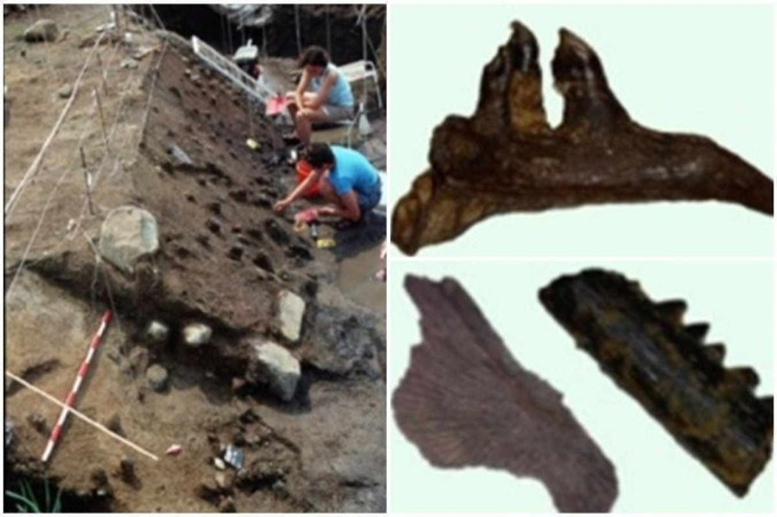780000Years ago, man liked his fish well cooked

Photo submitted on November 14, 2022 by Tel Aviv University, depicting the head of a contemporary carp, taken from the collections of the Steinhardt Museum of Natural History in Tel Aviv
780,000 years ago, the ancestor of modern man loved fish, a kind of carp in particular, but well cooked please, according to a team of Israeli archaeologists whose discovery provides the oldest proof of cooking food.

“ It was like being faced with a puzzle, with more and more information until you could tell a story about human evolution, ” explains Irit Zohar, first author of the study published Monday in Nature Ecology and Evolution. . Very little is known about the eating habits of the first human lines. The study recalls that to date there was no proof of cooking of food, by Homo sapiens or Neanderthal, beyond 170,000 years.
Paleontologists assume that cooking food, making it more chewable, digestible and healthier, greatly contributed to the expansion of the human race. The story the study tells caps sixteen years of work for Irit Zohar, a fish archaeologist at Tel Aviv University's Steinhardt Museum of Natural History. With an essential contribution to the cataloging of thousands of fish remains, found at the site of Gesher Benot Ya'aqov, in northern Israel. The place, on the banks of the Jordan, has preserved the history of a disappeared lake, Houla, today a nature reserve. Several archaeological layers contain a quantity of fish bones - vertebrae and bones. But where most contained bones as well as teeth, one of them"“, says Irit Zohar.

Heating and cooking
First clue of a possible cooking, because the fish bones keep very well in the fossils but they turn into gelatin once heated to a few hundred degrees. Precisely, at this same place, a colleague of Dr. Zohar identified pieces of coal, associated with hearths. Scientists know that an extinct human ancestor, probably Homo erectus, mastered fire 1.7 million years ago. But if " we can control the fire to heat ourselves, that does not mean that we control it for cooking ", recalls the ichthyarchaeologist.
The missing fish bones could very well have disappeared in a hearth, as Anaïs Marrast, an archaeozoologist at the National Museum of Natural History in Paris , explains . " The whole question about exposure to fire is whether it's to get rid of waste or a desire to cook ," she says. One could therefore only assume that the missing fish bones could have disappeared during cooking, but not prove it. Another clue, the key area had a low diversity of species, unlike the others, signifying a selection. There were essentially two species of fairly large carp, and no "small frying". Some of the fish were over two meters.

?Earth ovens
The decisive element came with the study of the teeth , and more precisely of their enamel. It was subjected to X-ray diffraction analyzes at the Natural History Museum in London to determine whether heating had changed the structure of the crystals making up the enamel. These " crystals elongate when heated ", according to Dr. Zohar, and more or less with temperature, with differences being measured on the nanometer scale. By comparing the structure of the heated enamel of extant and fossil species, the team established a scale of these transformations as a function of temperature: for raw fish, heated from 200 to 500 degrees Celsius, or charred to 900 degrees.
They concluded that the changes in enamel structure could not be due to fossilization, and that the fish remains found in the key area had been "subjected to low to moderate heat", below 500 degrees. . How ? This remains an enigma, according to the study which assumes the use of some kind of earth oven. After the fish, it remains to be seen when Man started cooking his steak, and whether he liked it rare or medium.
Source : websites

